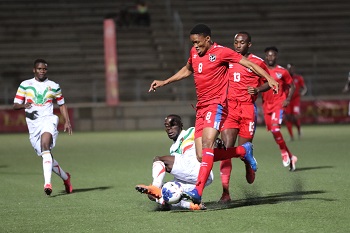
Junior archers gun for All Stars spot

Aim for the bulls eye: part of the kids that will go toe to toe this weekend to try and book a spot at the All Stars event to be held in South Africa.
The best 16 will book themselves a spot to participate at the Archery All Stars event from 8 to 13 October in South Africa with the final venue yet to be confirmed.
The participating archers make their way from all over the country, including: Windhoek Gymnasium, St Pauls College, St Georges, Koes Leersentrum, Berg Op, Walvis Bay, Lüderitz. The first of the two local NASP shoots were held in Lüderitz in February and it was a huge success.
The All Star competition will see archers, who form part of the NASP programme, from around the world compete against each other. The NASP was started 13 years ago in Kentucky, USA in an effort to get school children involved in outdoor activities as a balance to the increasing time spent behind computers and video games. The concept was enthusiastically accepted and has grown tremendously. After initially starting with 21 schools in Kentucky, in March 2002, there are now over 5500 schools in the USA, Canada, New Zealand, Australia, South Africa and Namibia participating actively. By 2010, over 5,000 000 pupils and 15,000 Archery Instructors were part of the NASP.
In most of these countries, the programme is part of the school curriculum. Instructors in general are convinced that this programme gets pupils more involved in school activities and actually leads to better academic results. It teaches learners life skills such as concentration, determination, tenacity, accuracy, respect, and consideration to name but a few.
It is very advantageous that this programme can be followed by pupils from different backgrounds, different economic classes, and different physical capabilities. Learners with certain disabilities can take part without any special adaptations.
Unfortunately in Namibia physical training is not part of the school’s curriculum any more and therefore, in participating schools, NASP is part of the extramural activities.











































